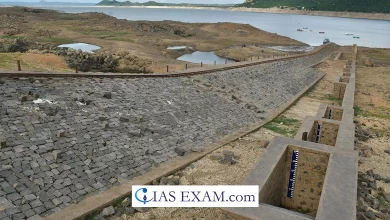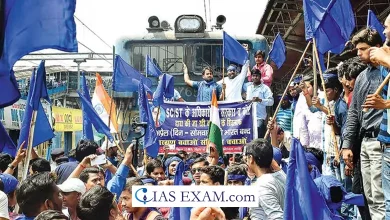UPSC Editorial Analysis
India Hypertension Control Initiative (IHCI)
[GS Paper 2 – Health and Education]
Context – A project called the India Hypertension Control Initiative (IHCI) finds that nearly 23% out of 2.1 million Indians have uncontrolled blood pressure.
What is IHCI?
- Recognizing that hypertension is a serious, and growing, health issue in India, the Health Ministry, the ICMR, State Governments, and WHO-India began a five-year initiative to monitor and treat hypertension. The programme was launched in November 2017.
- In the first year, IHCI covered 26 districts across five States — Punjab, Kerala, Madhya Pradesh, Telangana, and Maharashtra.
- By December 2020, IHCI was expanded to 52 districts across ten States — Andhra Pradesh (1), Chhattisgarh (2), Karnataka (2), Kerala (4), Madhya Pradesh (6), Maharashtra (13), Punjab (5), Tamil Nadu (1), Telangana (13) and West Bengal (5).
What is Hypertension?
- Hypertension is defined as having systolic blood pressure level greater than or equal to 140 mmHg or diastolic blood pressure level greater than or equal to 90 mmHg.
- The definition also assumes taking anti-hypertensive medication to lower his/her blood pressure.
Need for IHCI
- India has committed to a “25 by 25” goal, which aims to reduce premature mortality due to non-communicable diseases (NCDs) by 25% by 2025.
- To achieve India’s target of 25%, approximately 4.5 crore additional people with hypertension need to get their BP under control by 2025.
IHCI Findings
- The most significant finding thus far is that over a quarter of patients in the programme (23%) had uncontrolled blood pressure, and 27% did not return for a follow-up in the first quarter of 2021.
- In India, an estimated 20 crore persons suffer from hypertension. To meet India’s goal of a 25% reduction in the prevalence of high blood pressure by 2025, an additional 4.5 crore persons with hypertension will need to get their blood pressure under control.
- 4 lakh patients were receiving care between April 2020 and March 2021, out of a million patients registered in five phase I and three phase II states through December 2020.
- During the most recent visit in the first quarter of 2021, nearly half of the registered patients under care (47%) had blood pressure under control.
- With at least one-month refills for major blood pressure medicines, drug availability improved in all phase I states.
- Punjab, Madhya Pradesh, and Telangana have protocol medicine stocks for nearly six months. In May 2021, Kerala had only one month’s supply and Maharashtra had two months’ supply.
- Drug availability was a problem in most phase II states, and the procurement procedure took about a year from start to finish.
- In numerous health facilities, there were insufficient verified high-quality digital blood pressure monitors, affecting the accuracy of hypertension diagnosis. Except in Telangana and Maharashtra, dedicated nurses were in short supply in phase I states.
Prevalence of Hypertension in India
- About one-fourth of women and men aged 40 to 49 years have hypertension.
- Southern States have a higher prevalence of hypertension than the national average, according to the latest edition of the National Family Health Survey.
- While 21.3% of women and 24% of men aged above 15 have hypertension in the country, the prevalence is the highest in Kerala where 32.8% men and 30.9% women have been diagnosed with hypertension.
- Kerala is followed by Telangana where the prevalence is 31.4% in men and 26.1% in women.





.png)



